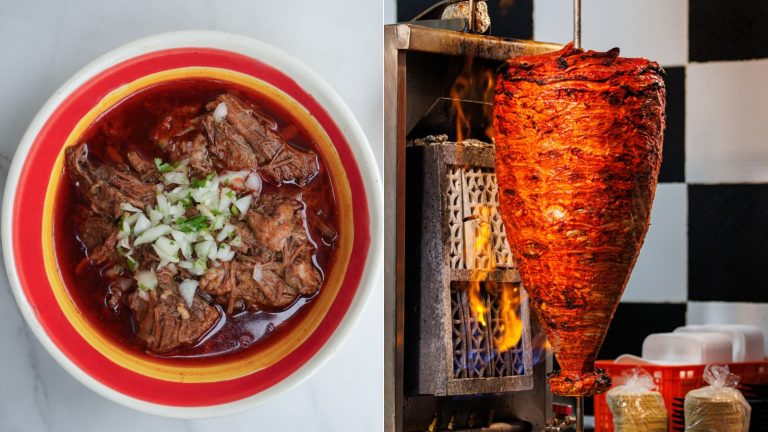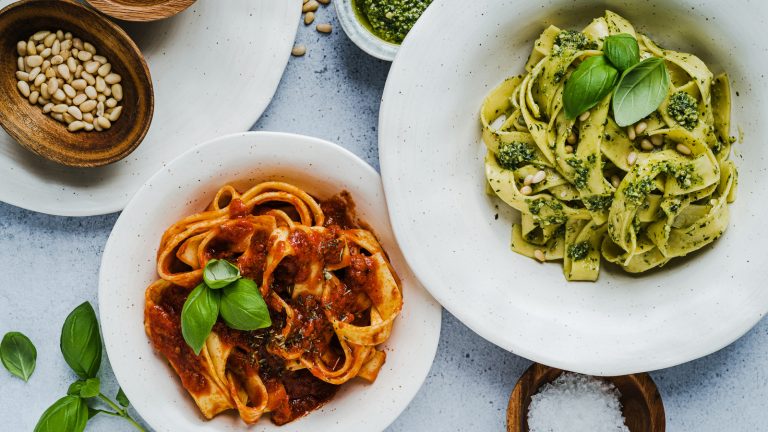Japan is a country renowned for its exceptional food, both in terms of quality and the skill and finesse that go into a meal. It is also a society bound by tradition and a culture that values politeness, mindfulness, and gratitude, all guided by a finely honed set of rules and practices. While the Japanese are wonderfully forgiving towards visitors, it is important to understand how things work to avoid disrespecting people and ensure you get what you want when ordering food.
To better understand cultural expectations and avoid common mistakes, we consulted Namiko Chen, author of the Japanese recipe, culture, and cooking site, Just One Cookbook. Chen tells us that a lot of mistakes happen because of differing expectations. For instance, in Japan, most restaurants specialize in just one cuisine, which can be confusing for foreigners who are used to a wide menu choice. Additionally, tipping is not a part of Japanese culture — attempting to tip can cause confusion or even offense for both parties.
Language is an obvious barrier, particularly as Japan uses a completely different writing system from our alphabet. Chen recommends using Google Translate, but is keen to point out that significant improvements have been made following the Tokyo Olympics. She tells us, “It’s not essential to know Japanese phrases [but] it helps to be familiar with the names of dishes and ingredients, since some items, like warabi mochi (bracken starch mochi), don’t translate well into English.” From not understanding food choices to not carrying cash, here are ten mistakes to avoid when ordering food in Japan.
Not learning a few basic phrases
It is a global faux pas not to learn a few simple phrases when visiting a country, but nowhere more so than in Japan. Japanese culture reveres politeness and gratitude and has clear views on etiquette. Learning a few Japanese phrases shows your host that you have taken the time to learn a little bit of their culture and care enough to thank them properly in their own language –– in restaurants, this may translate to better service.
Etiquette and politeness aside, learning a few basic phrases helps to ensure you get what you ordered. This is particularly important in Japan, where many restaurants may not label allergens and are resistant to customizing food. When entering a restaurant, you may be greeted with the word “irasshaimase,” you can respond by saying “ojamashimasu,” meaning thank you for having me, although a smile and a nod will suffice.
Once seated, a common mistake is not knowing how to summon the waiter. This is important because, in Japan, waiters don’t hover near the table; you must ask them to come over. While some restaurants may have a button you can ring, knowing how to call your waiter is a hands-on skill. To call your waiter, simply say “sumimasen,” which means excuse me.
It would be considered rude of you not to know some simple, polite phrases. “Arigatou gozaimasu” means thank you, and “kore o kudasai” means this, please. The word “itadakimasu” is a way to show thanks and appreciation for the food. It may also be prudent to arm yourself with some specific phrases according to your dietary needs, for example, “arerugi ga arimasu” for I have an allergy, or “karakunai de onegaishimasu” for not spicy, please –– make sure you read up on useful Japanese phrases before heading out to eat.
Expecting customizations
Customizing food is usually not an option in Japan. In a culture that has such a heavy respect for the origin and quality of the food and the craftsmanship of the chefs, changing a recipe isn’t even a consideration. Whereas it’s the norm to swap out items in America, in Japan, tinkering with the recipe may be considered rude, and your request will most probably be denied.
Namiko Chen explains, “In Japanese culture, there’s a deep respect for craftsmanship and group harmony, so customers tend to trust the chef’s intent and avoid making special requests. Many kitchens are also small and highly streamlined, making customizations difficult. While some modern restaurants are more flexible, the traditional mindset still shapes most dining experiences.”
If you want to customize your food, consider visiting an okonomiyaki restaurant (a type of savory pancake) where you can pick what you eat, or teppanyaki restaurants where the chef cooks the food in front of you.
The only time customizations may be acceptable is if you have dietary restrictions and need food to be amended. However, bear in mind that a Japanese restaurant may be able to omit certain items but cannot always easily cater to allergies. For example, some types of ramen broth take days to make.
Not having a basic understanding of Japanese foods
Food is an integral part of Japanese culture. The traditions and skills associated with food are so important that in 2013, the traditional dietary cultures of Japanese food were recognized by UNESCO. Unsurprisingly, given this accolade, the Japanese people are highly skilled in food preparation and take great pride in the food they produce. While not having a basic understanding of different foods is forgivable, learning is encouraged, and taking the time to understand such a venerable tradition demonstrates respect for the skills and traditions of Japanese culture.
UNESCO awards aside, not having a basic understanding of what food you are ordering could result in some catastrophic ordering decisions. Japanese food is very different from what we are used to in the U.S., and it would be a mistake not to arm yourself with some simple food terminology in advance so that you are sure you know what you are ordering. Take a look at this list of Japanese dishes you should try at least once, and make sure to note down a few food terms before going out to eat. Some that should be familiar are sushi, ramen (noodles), miso (a type of soup), tempura (lightly battered seafood or veggies), yakitori (chicken skewers), tonkatsu (breaded pork cutlet), and gyoza (dumplings).
Misunderstanding food
Japanese culture and food vastly differ from what we eat in the West. This, coupled with an unfamiliar language and the Japanese use of different writing systems, means that it can be very difficult to understand what is available and to order your food correctly.
Misunderstanding what food is on offer can lead you to receive some of Japan’s more unusual delicacies, which you may wish to avoid depending on your taste and ethics. You may find foods like whale or shark fin soup on a Japanese menu, along with some that don’t appeal to a U.S audience, like crickets, sea urchins, or cod semen.
To ensure you don’t order the wrong food, look out for plastic food displays often shown outside or in the windows. Some shops may have photographs of the food in the window or menus with pictures. You can ask for an English menu, but Google Translate can keep you from going too wrong if this isn’t available.
Don’t forget about portion sizes; portions are often smaller in Japan, so you may want to order more dishes than you usually do. Also, don’t assume that allergens are labeled –– it’s best to inform the chef if you have any specific requirements, and don’t be afraid to ask for substitutions; for example, many ramen restaurants will offer gluten-free noodles.
Queing and ordering
Japanese culture is based on consideration, respect, and mindfulness. Etiquette is extremely important in Japan as it maintains the status quo, keeps order, shows deference, and maintains harmony. Not understanding the etiquette around queuing and ordering food in Japan could be seen as an insult or simply hinder your ability to place and receive your order.
Don’t ever cut the line in a queue. In Japan, queuing is a way of life. It is considered rude to cut or skip a line and impolite to stand too close to the person in front of you. Don’t sit waiting for wait staff –– in many restaurants, the waiters don’t come directly to you but wait for you to ring a bell or call them over with the words “sumimasen” or raise your hand, and someone should come to you. Don’t sit waiting to pay your bill –– many restaurants will bring the bill to your table, but you must take it to a counter to pay it. Sometimes, you won’t receive a bill and are expected to visit the pay counter with your table number. Some restaurants require you to pay at the window before you eat your food, and often, in ramen and gyudon restaurants, you pre-buy meal tickets from a vending machine and then hand the tickets to the staff who will bring your meal.
Not bringing cash
In Japan, many restaurants still operate a cash-only system. When visiting a restaurant in Japan, it could be a mistake not to bring some of the local currency with you. While in bigger towns and cities, many restaurants have moved to accept cards, getting cash in smaller and more rural places is always advisable.
The Japanese currency unit is the yen, pronounced “en” in Japanese, and represented on menus by the currency symbol ¥. Coins are available in 1, 5, 10, 50, 100, and 500 denominations, while notes start at 1000, 2000, 5000, and 10000. In restaurants, you may see food referred to as one coin, which refers to the 500 yen Japanese coin.
Many Japanese restaurants require you to buy tickets from a self-service vending machine, which you then take to a counter to order. For this reason, it’s a good idea to carry smaller denominations and coins, as many machines won’t give change for larger notes.
Not checking business hours
Unsurprisingly, in a culture that is a stickler for rules and timekeeping, not checking business hours or overstaying your welcome is considered rude and may result in not being served at all.
Most restaurants have a last call time, which is usually around 30–60 minutes before closing. Some restaurants list this time on their website. If you try to order after this time, you are considered impolite, and at worst, your order may be refused.
Many shops in Japan close between lunch and dinner, so getting food in the late afternoon can be challenging. Restaurants usually open from around midday until 3:00 p.m. and open again around 5:00 p.m. If you are looking for food outside these meal times, then heading to a larger fast food chain or one of the many food vending machines gives you a better chance of success.
Don’t assume you can take as much time as you want at an all-you-can-eat restaurant. Most all-you-can-eat restaurants have a set time limit, usually around two to three hours. When your time is up, a waiter will announce a last call, and you are expected to finish promptly.
Trying to use a delivery service (if you don’t speak Japanese)
Ordering food from a Japanese restaurant is hard enough in person –– be very cautious about ordering food over the phone or from a delivery service if you don’t speak Japanese. When visiting a restaurant, you can use visual aids to help you; food displays, picture menus, and Google Translate can all help you get your message across, but when ordering online or via the phone, you are flying solo.
Namiko Chen says that while takeout has grown more popular in recent years, it is still relatively limited compared to other countries. She explains that demae – or takeout in Japan — is widely available, but the orders are usually placed by phone.
If you need to use the phone, we recommend choosing a simple food item you know you like and following it with please, so saying “ramen, kudasai or “ramen, please.” You won’t win any awards for linguistics, but you’ll get what you ordered.
If possible, we recommend heading to an online ordering service rather than trying to make a phone order. In larger cities across Japan, an increasing number of websites have an English language option; look for Uber Eats, Wolt (formerly DoorDash), FineDine, and Demaecan.
Eating takeout food on the street
Don’t make the mistake of eating your food on the street. In Japan, takeout food is made to be eaten at home. The Japanese are a forgiving culture, and while you won’t be audibly castigated for eating in the street, it is certainly frowned upon –– with one notable exception –– the plethora of vending machines means that eating next to or near a vending machine provides an exception to the rule.
If you order takeout, plan to bring it back home to eat, but if you cannot do this, look for designated seating areas, a bench in a quiet area, or, failing that, a stand near the food stall you ordered from. Walking down the street and eating at the same time is considered rude, even with something as simple as an ice cream. And don’t ever make the mistake of “picnicking” in a park with a temple or a shrine, as it is taboo.
If you eat in the street, a cardinal sin is not disposing of your garbage correctly. Japan is notorious for not having many garbage bins; despite this, you are expected to keep your garbage with you and dispose of it at home. Never leave garbage on the floor or in public places.
Ignoring restaurant rules
Etiquette is key in Japan, whereas some faux pas may earn you a sympathetic smile for your lack of knowledge, others are considered downright rude. Many restaurants in Japan have specific rules around ordering food and dining in-house, so it’s important that you read any signage or, ideally, study a website beforehand to understand what those are.
Rules can include: no taking photos inside, removing shoes when entering the establishment, speaking too loudly, and time limits. Namiko Chen recommends taking a moment to learn the dining etiquette and enjoy the experience. She says, “In Japanese culture, respect is met with kindness and care.”
It is frowned upon to order drinks before food, and there are often one-drink minimums enforced in restaurants, so don’t make the mistake of not ordering a drink. The exception to this rule is at izakaya restaurants, which are similar to a bar or tapas restaurant. In these places, the focus is on drinking with food as a secondary option. Note that if your glass is empty in Japan, it usually signals that you wish to drink more, so keep it full unless you want another one.
Once seated, don’t forget your manners. When handed an oshibori (a wet towel), remember that it is to clean your hands only –– do not make the mistake of wiping your face. Never eat directly from a shared bowl. Sticking chopsticks upright in rice is considered deeply offensive (the chopsticks look like incense sticks, which are traditionally used to commemorate the dead). Oh! And in the case of ramen, slurping is good!





